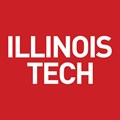Story
The Problem:
Schools across the country have been flooded with tons electronic air cleaners that lack independent peer review and can be potentially harmful, marketed under a variety of names like; ionizers, UV-PCO, plasma generators, H2O2, DHP, etc... due to the increasing recognition of aerosol transmission of COVID-19 in poorly ventilated schools.
Sales reps and manufacturers are making such claims as; 99.9% SARS-COV-2 removal, mountain top air, natural, chemical free, active vs passive; as selling points to schools looking for ways to protect their students. In addition, many of these companies lab test results are not readily made available and critical transparency is lacking. Most sales reps rely on carefully crafted marketing material written by a combination of marketing teams and lawyers, with tons of fine-print disclaimers.
Respected indoor air quality experts agree that many of these technologies are unproven with no scientific peer reviewed independent backing of their effectiveness or safety. These companies primarily rely on third party testing which is not the same as scientifically peer reviewed independent research. This makes them potentially harmful for our children.
Unfortunately, these devices, described by CDC as “emerging technologies” and by ASHRAE as “unproven” lack enforced Testing Standards Methods and inadequate government regulation.
Hundreds of schools/school districts and counting, have already implemented electronic air cleaners, potentially inducing a sense of false security at best and at worst harming the health of our children.
Proposal of Funds:
The funds will be donated to researchers at the Illinois Institute of Technology to measure the effectiveness and safety of a wide variety of emerging air cleaning technologies. Our partners have the capabilities to measure particulate matter (0.01-10 µm), ozone (O3), nitrogen oxides (NOx), total volatile organic compounds (TVOCs), speciated VOCs, and more, in a combination of controlled test chamber facilities and field tests. Key parameters the teams can measure include:
• Clean air delivery rates (CADR): this is a widely accepted method to measure the effect of an air cleaner taking into account airflow and efficiency.
• Single-pass removal efficiency: this is an efficiency test before and after the air cleaner.
• Byproduct formation rates: this is a series of tests of by-products potentially generated by the air cleaner. The current list of by-products are formaldehyde, speciated VOCs, ultrafine particles, and ozone.
• Effectiveness in reducing or generating constituents at steady-state conditions
And potentially other tests deemed necessary, based on a device's technology, manufacturer claims and potential for harm.
Goal:
The independent evaluation data will be used to fill gaps left by a patchwork regulatory framework and it will give schools the knowledge they need to move forward in making healthy choices for the hundreds of thousands of children in this country. The data collected from these studies can also be potentially used to petition for legislative changes. This would potentially result in stricter regulations for these electronic air cleaner companies claims and enact stricter safety standards.
If your district has installed an electronic air cleaner please forward them this Open Letter: https://bit.ly/3tk3hgg
Co-authored by Dr. Marwa Zaatari and Dr. Marcel Harmon. Reviewed and supported by: Dr. Linsey Marr, Dr. Jose Luis Jimenez, Dr. William Bahnfleth, Dr. Shelly Miller, Dr. Jeff Siegel, Mr. Hoy Bohanon, Dr. Elliott Gall, Dr. Kim Prather, Dr. Delphine Farmer, Dr. Brent Stephens, Dr. Richard Corsi, Dr. Wayne Thomann.
